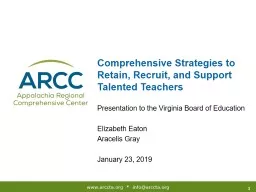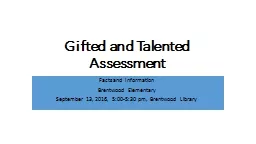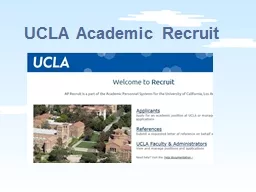PPT-Comprehensive Strategies to Retain, Recruit, and Support Talented Teachers
Author : giovanna-bartolotta | Published Date : 2019-02-03
Presentation to the Virginia Board of Education Elizabeth Eaton Aracelis Gray January 23 2019 The ARCC builds state education agency SEA capacity to support
Presentation Embed Code
Download Presentation
Download Presentation The PPT/PDF document "Comprehensive Strategies to Retain, Recr..." is the property of its rightful owner. Permission is granted to download and print the materials on this website for personal, non-commercial use only, and to display it on your personal computer provided you do not modify the materials and that you retain all copyright notices contained in the materials. By downloading content from our website, you accept the terms of this agreement.
Comprehensive Strategies to Retain, Recruit, and Support Talented Teachers: Transcript
Presentation to the Virginia Board of Education Elizabeth Eaton Aracelis Gray January 23 2019 The ARCC builds state education agency SEA capacity to support local educational agencies LEAs or districts and lowperforming . . NC FCCLA VP . of Membership. . D. istrict. . 7. Elkin. . High. S. chool. . Empower Within . by . Going for the Red. . Empower Within with FCCLA. For those of you new to the organization, and a refresher for the rest of you, here is a glimpse of the incredible leadership experience you have ahead!. Bruce Rasmussen. BruceRasmussen@pdcaustralia.com. This presentation provides the slides for Bruce Rasmussen’s presentation at. Microsoft’s Australian Partner Conference, . held. on the Gold Coast, September 2009. People, Power, and Passion. Tracy . Weinberg, Associate Director. Texas Association for the Gifted and Talented. . . State of Texas’ Definition of a . Gifted and Talented Student. ". Gifted and talented student" means a child . GAME PLAN. Refresh. Revamp. Recruit. The Green Park, Chennai – 8. th. March 2014 (Saturday). presents. The Genesis. Started . O. nline as . Facebook. Community (Cross Border Recruiters Exchange-CBRE) on 31. TOPICS to Cover Recruit Day # 2:. MILITARY . CUSTOMS AND . COURTESIES. Addressing . a Young Marine adult . leader. Addressing . all other Adults . Entering . a Young Marine . Office. Rendering . Honors to the National Colors . A Total Team Effort. Garrett . Harencak. Major . General. Commander. Air Force Recruiting . Service. The Mission. An Environmental Scan. The . Airmen. Niche & Diversity Requirements. How . You . Must Help. Walsall FC Community Programme. Parents . Information. Walsall Football Club. The Banks’s Stadium. Bescot Crescent. Walsall. WS1 4SA. Welcome to the parents of Talented & Gifted players. Talented & Gifted – Development Programme. Facts and Information. Brentwood Elementary. September 13, 2016, 5:00-5:30 pm, Brentwood Library. Nomination Process. Fall 2016. Nomination Forms . sent to Emily Stewart between September 12. th. -23. UCLA Academic Recruit. First posting: 12/12/2012. Jobs posted: 124. Applicants: 5,162. UCLA Academic Recruit. Training . and Support. 225 staff have attended a . class. Monthly . Open . House. Website . 2016-17 Comparisons. 2016-17. salary settlements for districts within driving range. School District. 2016/17 On Schedule. 2016-17 Off Schedule. 2017-18. Amador County Unified. 4% $500 increase on HB Cap. BECOMING A PROFESSIONAL UFO. Home Events . The Key to BV and IBV. !!. “Show & Tell”. 6. ABC’s . of Home Events. A. lways. B. e. C. ultivating . Possibilities. INTEREST ~ ENTHUSE ~ DATE . “. Let Us Pray…. How to Recruit & Keep Good Volunteers in Your Ministry. What We Will Look At. The Continual . Volunteer Ministry Leaders. Circle . First Step - RECRUIT. Crawl/ Walk/ Run. The Seven Sins of Recruiting. Aims of the Programme. To identify academic strengths and specific talent in our students. To differentiate upwards for MASt students in all lessons and for Gifted & Talented students in their nominated subjects. What’s the Program & Who does it help?. RETAIN is a partnership among Workforce Alliance (WA), KS Department of Commerce (DOC), and Ascension Via Christi (AVC); it is a stay-at-work/return-to-work program .
Download Document
Here is the link to download the presentation.
"Comprehensive Strategies to Retain, Recruit, and Support Talented Teachers"The content belongs to its owner. You may download and print it for personal use, without modification, and keep all copyright notices. By downloading, you agree to these terms.
Related Documents














